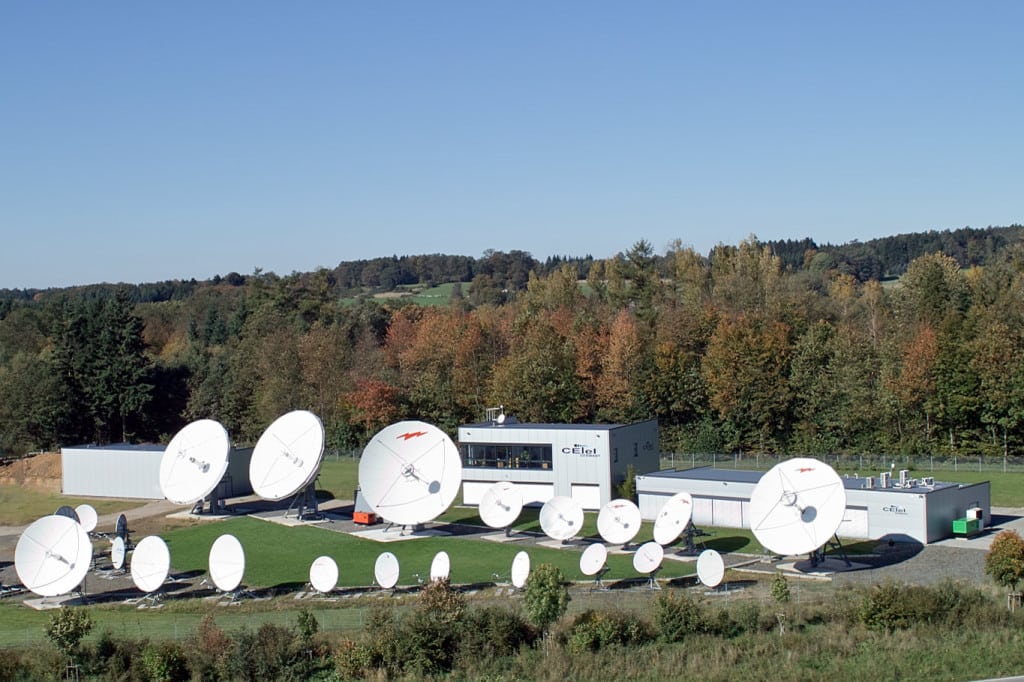Latest News

An aerial view of a CETel teleport. Photo: CETel
New technology on the satellite side of the supply chain is allowing teleport operators downstream, such as CETel, to engage with previously inaccessible customers. In an interview with Via Satellite, CETel business development lead Glynn Wagg attributed the company’s expanding palette of services and customers to the influx of Low and Medium Earth Orbit (LEO/MEO) satellites, as well as the dropping cost of bandwidth.
Despite the massive capital expenditure required to lay out lines of fiber, satellite has traditionally been seen as the more expensive option overall. Now though, with high throughput spot beams and other technologies pushing down the cost of bandwidth, companies are finding new ways to leverage the cheaper connectivity. One of the fastest growing trends for customers of CETel — which operates teleports in Germany — is improving crew welfare, Wagg said. “The crew of remote operators are coming on board with their own devices, and we’re seeing more requests to give their crew connectivity so they can use WhatsApp, Facebook, Instagram, etc. — whatever they do … so they feel a bit more at home when they’re off shift in the middle of the desert or offshore,” Wagg said. “In times gone by, because of the price of satellite, the connectivity was for business-use only.”

Glynn Wagg, director of international business development for CETel. Photo: CETel.
Cheaper bandwidth is also allowing companies with relatively smaller budgets to partake. Previously, only major corporations in verticals such as mining and oil and gas, had budgets large enough for substantial connectivity contracts. “Now, it’s renewable energy, banking, hospitals — we’re getting requests from a wide range of companies. Anybody that needs connectivity now is also looking at satellite as well as the usual mobile networks,” Wagg said. “You’re getting a lot better service for a lot less money.”
Machine-to-Machine (M2M), the Internet of Things (IOT) and Big Data applications are driving much of the demand in these new markets. Backup connectivity is also proving a lucrative target for satellite in regions, such as Africa, that lack established infrastructure in remote locations. In January, CETel teamed up with Arabsat to introduce new business continuity services from the Arabsat 5c satellite at 20 degrees east. Rather than asking customers to spend thousands per month on a constant satellite connection, they can spend “a fraction of that as an insurance policy,” Wagg said. Their wallets, then, only take a hit if the satellite connection is needed to recover after a disaster.
To ensure it can meet the broadening demands of its customers, Wagg said CETel is agnostic in deciding which satellite operators to work with. The company is keeping a close eye on constellations being launched into new orbits and, at the same time, is extending its contracts with existing partners who are investing in new technologies. “If Medium or Low Earth Orbit (MEO/LEO) fits the bill, then yes, we’ll definitely look at that,” Wagg said.
Just last month, CETel signed a new five-year contract with long-time partner SES to take advantage of its Medium Earth Orbit (MEO) O3b constellation. CETel will use the fleet’s low latency and high throughput capabilities for Big Data applications in the exploration and production industry. According to Wagg, the customer in the contract wanted to push large data through the network, but was concerned about latency delay — so MEO satellites were a good fit.
And even while some satellite operators are changing their business models to circumvent the supply chain and interact with end users directly, Wagg said he doesn’t feel there’s a threat to legacy businesses like CETel. “Satellite operators’ footprints cover so many different countries and regions. CETel delivers services adhering to the distinct in-country regulations,” he said. “[Companies] like CETel offer the fully managed end-to-end service. We have the value-add of the hardware — such as a server, a riverbed, compression software, routing, and the in-country support.”
Get the latest Via Satellite news!
Subscribe Now